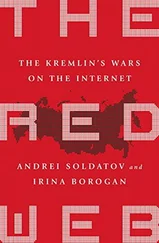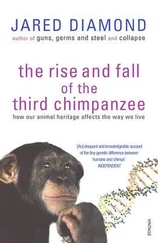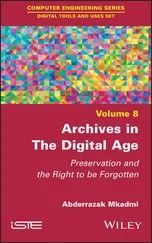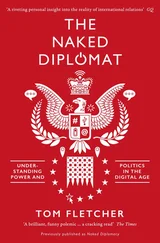Jared Cohen - The New Digital Age
Здесь есть возможность читать онлайн «Jared Cohen - The New Digital Age» весь текст электронной книги совершенно бесплатно (целиком полную версию без сокращений). В некоторых случаях можно слушать аудио, скачать через торрент в формате fb2 и присутствует краткое содержание. Жанр: Старинная литература, на английском языке. Описание произведения, (предисловие) а так же отзывы посетителей доступны на портале библиотеки ЛибКат.
- Название:The New Digital Age
- Автор:
- Жанр:
- Год:неизвестен
- ISBN:нет данных
- Рейтинг книги:5 / 5. Голосов: 1
-
Избранное:Добавить в избранное
- Отзывы:
-
Ваша оценка:
- 100
- 1
- 2
- 3
- 4
- 5
The New Digital Age: краткое содержание, описание и аннотация
Предлагаем к чтению аннотацию, описание, краткое содержание или предисловие (зависит от того, что написал сам автор книги «The New Digital Age»). Если вы не нашли необходимую информацию о книге — напишите в комментариях, мы постараемся отыскать её.
The New Digital Age — читать онлайн бесплатно полную книгу (весь текст) целиком
Ниже представлен текст книги, разбитый по страницам. Система сохранения места последней прочитанной страницы, позволяет с удобством читать онлайн бесплатно книгу «The New Digital Age», без необходимости каждый раз заново искать на чём Вы остановились. Поставьте закладку, и сможете в любой момент перейти на страницу, на которой закончили чтение.
Интервал:
Закладка:
Military policies too will change in response to the threat cyber terrorists pose. Today, most of the terrorists the military chases down are in failed states or ungoverned regions. In the future, these physical safe havens will also be connected, allowing terrorists to engage in nefarious virtual acts without any fear of law enforcement. When intelligence reveals known cyber terrorists planning something dangerous, extreme measures like drone strikes will come under consideration.
Western governments will try to attract skilled hackers to their side as well. In fact, hackers and government agencies in the United States work together already, at least in matters of cybersecurity. For years, agencies like the Pentagon’s Defense Advanced Research Projects Agency (DARPA) and the National Security Agency (NSA) have recruited talented individuals at venues like the computer-security conference series Black Hat and the hacker convention Def Con. In 2011, DARPA announced a new program called Cyber Fast Track (CFT), created by a former hacker turned DARPA project manager, which aimed to accelerate and streamline the cooperation between these communities. Through CFT, DARPA began awarding short-term contracts to individuals and small companies to focus on targeted network-security projects. This initiative was distinguished by its focus on smaller players and lone actors rather than big companies, and its ability to green-light grants quickly. DARPA approved eight contracts in the first two months of the program—in other words, at lightning speed compared with the normal pace of government contracting. This process allowed groups with considerable skill who would otherwise not work with or for the government to contribute to the important work of improving cybersecurity, easily and in a time frame that reflects the immediate nature of the work. CFT was part of a shift in the agency toward “democratized, crowd-sourced innovation” championed by Regina Dugan.
We asked Dugan about the motivation behind this unconventional approach to problem-solving—after all, inviting hackers into the tent to handle sensitive security matters raises more than a few eyebrows. “There is a sense among many that hackers and Anonymous are just evildoers,” she said. “What we recognized and tried to get others to embrace was that ‘hacker’ is a description of a talent set. Those who were declared (self-declared or otherwise) ‘hackers’ had something rather significant to contribute to the issue of cybersecurity, with respect to how they approach problems, the timelines on which they approach problems and their ability to execute and challenge.” The success of Cyber Fast Track, she added, was a signal of the viability of that model. “I don’t think that should be the only model we use,” she said, “but it should absolutely be part of our approach.”
More outreach to hackers and other independent computer experts should be a priority in the coming years, and we expect that Western governments will continue to try to include them, either overtly, through programs like CFT, or covertly, through the channels of intelligence agencies. Governments will push hard to acquire virtual counterparts in foreign countries to complement their undercover operators and assets active in the physical world, recruiting hackers and other technically savvy individuals to become sources and dealing with them remotely over secure online channels. There are implicit challenges associated with virtual assets, however. Despite their usefulness, there would be an absence of in-person interactions, which intelligence operatives have relied on for centuries to determine the credibility of a source. A video chat is hardly the same thing, so agencies will have to figure out how they can vet new participants effectively. Trusting virtual assets may in fact be harder than turning them.
The Terrorists’ Achilles’ Heel
Terrorists in the future will find that technology is necessary but high-risk. The death of Osama bin Laden, in 2011, effectively ended the era of the cave-dwelling terrorist isolated from the modern technological ecosystem. For at least five years, bin Laden hid in his mansion in Abbottabad, Pakistan, without access to the Internet or mobile phones. He had to stay off-line to stay safe. This drastically reduced his reach and influence through an al-Qaeda network that relied, at least in part, on connectivity to operate. Ironically, it was his lack of Internet access in a large urban home that helped identify him, once his courier pointed intelligence operatives in the right direction.
And while bin Laden may have evaded capture by staying off-line, even he used flash drives, hard drives and DVDs to stay informed. These tools enabled him to keep track of al-Qaeda’s operations internationally and provided an efficient way for his couriers to move large amounts of data between him and various terror cells elsewhere. As long as he was at large, the information on these devices was secure, impossible to access. But when Navy SEAL Team Six raided his home, they seized his devices, getting not just the world’s most wanted man but also critical information about everyone he had been in contact with.
The more likely terrorist scenario continuing into the new digital age will resemble the Mumbai attacks in 2008, when ten masked men held the city hostage in a three-day siege in which 174 people were killed and more than 300 wounded. The gunmen relied on basic consumer technologies—BlackBerrys, Google Earth and VoIP—to coordinate and conduct the attacks, communicating at a command center in Pakistan with leaders who watched live coverage of the events on satellite television and monitored the news to provide real-time tactical direction. Technology made these attacks much more deadly than they could have been otherwise, but once the last (and only surviving) gunman was captured, the information he and, critically, the leftover devices of his comrades, provided allowed investigators to follow an electronic trail to significant people and places in Pakistan that might not have otherwise been known for months, if ever.
The silver lining of cyber terrorism is that, in almost every way, its practitioners will have less room for error. Most of us have no reason to think about how differently we might interact with technology if our freedom or lives depended on erasing the tracks we leave when we go online. Cyber terrorists possess an unusually high technical awareness, but what about their friends? What about the relatives they correspond with? It is unrealistic to expect perfectly disciplined behavior from every terrorist online. Consider the nonterrorist example of John McAfee, the millionaire antivirus software pioneer who became an international fugitive after fleeing from the authorities who wanted to question him in connection with the murder of his neighbor in his adopted home country, Belize. After inviting journalists from Vice, an online magazine, to interview him at his secret hideout, McAfee posed for a picture with Vice ’s editor in chief, taken with an iPhone 4S. What he—and his Vice interviewer—didn’t know was that publishing that photo also gave away McAfee’s location, since many smart phones (including the iPhone 4S) embed metadata about GPS coordinates into camera shots. All it took was one Twitter user to notice the metadata and suddenly the authorities, and the world, knew McAfee was in Guatemala, near a swimming pool at the Ranchon Mary restaurant. Vice should have known better (we’ve known about location metadata for years), but as smart phones become ever more complicated, the number of small details to keep track of compounds.
As social, professional and personal lives move increasingly to cyberspace, the interconnectedness of all digital activity increases dramatically. Computers are very good at recognizing patterns and solving needle-in-the-haystack problems, so with more data, computer algorithms can compute more precise predictions and correlations—faster and with more accuracy than any human could. Imagine a Moroccan extremist in France who has done everything possible to anonymize his smart phone from its mobile network. He has turned off geo-location, opted out of all data sharing and removes his SIM card periodically in case anyone tries to track it. He has even adopted the habit of taking the battery out of his phone as a final safeguard, knowing that when a phone is turned off, a battery retains the power to send and receive signals. His phone number is simply one of thousands, impossible to pinpoint or link to him or his location. Yet law enforcement knows he has a fondness for betting on horse races, and they know there are four off-track betting locations in his town. Using that data, they can narrow down the potential pool of numbers from thousands to the hundred or so that frequent those places. And let’s say a few of his known acquaintances are not as careful with their data tracks as he is; law enforcement can then cross-reference that off-track-betting pool with the various locations of his friends. That could be all they need to do to identify his number. This type of big-data investigation was once unthinkable, but it’s easy today—yet another example of humans and computers splitting duties according to their strengths. Off-line or online, our activities (and those of our friends, families and our demographic) provide intelligent computer systems with more than enough information to identify us.
Читать дальшеИнтервал:
Закладка:
Похожие книги на «The New Digital Age»
Представляем Вашему вниманию похожие книги на «The New Digital Age» списком для выбора. Мы отобрали схожую по названию и смыслу литературу в надежде предоставить читателям больше вариантов отыскать новые, интересные, ещё непрочитанные произведения.
Обсуждение, отзывы о книге «The New Digital Age» и просто собственные мнения читателей. Оставьте ваши комментарии, напишите, что Вы думаете о произведении, его смысле или главных героях. Укажите что конкретно понравилось, а что нет, и почему Вы так считаете.












